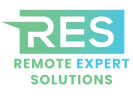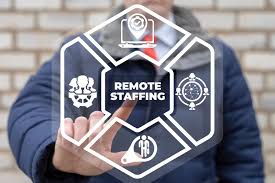Navigating the Risks of AI-Powered Cyber Threats
Artificial Intelligence (AI) powers remarkable business efficiencies—from automating support systems to analyzing large volumes of data. Yet in 2025, as U.S. companies increasingly embrace AI for growth, they must also contend with a new set of dangers. AI does not only empower defenders—it arms attackers, too. The rise of AI-driven cyberattacks and a concerning tactic known as “vibe hacking” is transforming the cybercrime landscape. In this article, we explore the darker side of AI in cybersecurity, its specific risks for U.S. businesses, and practical strategies to stay secure and resilient.
What Is the Dark Side of AI in Cybersecurity?
While AI helps companies detect threats faster and automate security workflows, it also makes perpetrators smarter. FraudGPT, WormGPT, DarkBERT, and similar AI Services platforms now give even non‑technical criminals powerful tools. These tools can generate malware, launch phishing campaigns, and impersonate real individuals by learning-upon real communication patterns. What once required a team of sophisticated hackers can now be carried out by a single person with access to AI tools.
The most alarming development is vibe hacking—a form of AI-powered social engineering in which attackers use emotionally intelligent messaging that imitates tone, member language, and behavioral context. By impersonating genuine colleagues or authority figures, attackers highjack trust and trigger actions, such as approving funds or sharing confidential data, without the victim realizing anything suspicious.
How Vibe Hacking Works and Why It Is So Dangerous
Understanding Vibe Hacking – Emotional Deception at Scale
Vibe hacking goes beyond phishing by capturing the essence of authentic human conversation. An AI system trained on a company’s internal emails, Slack threads, or voice memos can craft communications that feel natural. Because the tone, timing, and phrasing mirror actual interactions, employees often recognize these messages as legitimate. It blurs the line between authenticity and fraud.
Why Businesses Should Fear Vibe Hacking and AI‑Driven Attacks
AI makes cyberattacks faster, more adaptive, scalable, and significantly harder to detect. Attackers can generate multiple tailored messages, deepfake audio and video clips, or malware in minutes. The low entry barrier lets even novices launch complex attacks. And because the AI learns as it goes, attacks become more convincing over time—outpacing traditional defenses reliant solely on human recognition.
AI-Enhanced Threat Capabilities That Every Business Must Know
Cybercriminals are exploiting AI in several frightening ways:
AI enables attackers to run automated vulnerabilities scans across thousands of systems and deploy exploits almost instantly. Traditional patches fall behind these evolving threats. Attackers leverage automation to uncover weaknesses in software and network configurations, using tools like XBOW to run end-to-end autonomous hacking.
AI platforms craft highly convincing phishing messages referencing internal projects, employees, and tone. These messages bypass conventional filters because they mimic real communication patterns—making them extremely effective against less vigilant employees.
Deepfake audio has reached a level where an executive might receive a voicemail seemingly from their CFO asking for a wire transfer. The voice is AI-generated using publicly available recordings, making it nearly impossible to spot without verification.
Who Is Most Vulnerable to AI-Powered Cybercrime?
Certain organizations and individuals face a higher risk:
Small and Medium-Sized Businesses (SMBs) that lack dedicated cybersecurity teams and budget are prime targets. Attack tools built with AI reduce the required technical skill, making SMBs more vulnerable.
Remote teams using platforms like Slack, Zoom, or Teams are at greater risk of vibe hacking since impersonation can go unnoticed in virtual channels. This makes it easier for AI to slip malicious requests past remote workers.
Critical industries—such as finance, healthcare, and government—handle sensitive and valuable data. They face elevated stakes when AI attackers target privileged access or intellectual property.
Public figures, executives, and influencers are high-profile targets. Their online presence gives AI tools plenty of data to replicate distinctive speech or writing patterns for impersonation.
How to Defend Against the Dark Side of AI in Cybersecurity
Strategies for Staying Ahead in a World of AI-Driven Threats
To build resilience, organizations must evolve their cybersecurity approach. AI-powered tools are essential for modern defense:
Deploy solutions from advanced vendors like Microsoft, Palo Alto, CrowdStrike, or SentinelOne that use machine learning and real-time pattern analysis. These systems detect anomalous behavior quickly—often before a human can react.
Regular digital hygiene training and simulated phishing exercises help employees recognize malicious behavior. Since vibe attacks rely on emotional cues, organizations should emphasize cautious verification and escalation protocols.
Implement strong multi-factor authentication (MFA), including biometric or authenticator apps, to prevent unauthorized access even if credentials are compromised.
Use email filters and behavioral anomaly detection tools able to flag messages with emotive context, spoofed metadata, or asynchronous tone—even when grammar is flawless.
Monitor dark web forums and AI Services marketplaces for emerging threats. When tools like WormGPT or FraudGPT are spotted, security teams should increase alerts and harden defenses around potential attack vectors.
AI Ethics, Policy Gaps, and the Uncertain Future
How Ethical Use and Regulation Impact of AI in Cybersecurity
AI’s rapid advancement raises serious ethical and regulatory questions. Should we ban the creation of malicious AI tools entirely? Could AI-generated content require watermarks to distinguish it from human communication? How do we monitor misuse of open-source AI models?
Major regulatory efforts such as EU’s AI Act and Cyber Resilience Act aim to limit misuse of artificial intelligence, but legal frameworks often lag behind rapidly evolving technologies. U.S. regulatory attention is growing—but clear rules and enforcement remain underdeveloped. Businesses must not rely solely on policy but proactively implement safeguards now.
FAQs – The Dark Side of AI in Cybersecurity
What is the dark side of AI in cybersecurity?
AI-powered tools enable cybercriminals to automate complex attacks, craft deceptive phishing campaigns, and impersonate trusted individuals via deepfakes. These tools make attacks scalable, fast, and difficult to detect using traditional defense methods.
How does vibe hacking work and why is it scary?
Vibe hacking uses AI trained on real communication patterns to send messages that mimic tone, timing, and emotional context. Because they feel human and authentic, victims are more likely to trust and act on them—leading to breaches or fraud.
Who is most at risk of AI in cyberattacks?
Organizations vulnerable include SMBs, remote workforce companies, healthcare, finance, and government entities, as well as public-facing executives or influencers whose communication style can be replicated.
Can AI be used for cyber defense instead of offense?
Yes. Many security platforms now use AI and machine learning to detect anomalies, flag suspicious behavior, and automate incident response. These tools must be combined with human oversight for maximal effectiveness.
How can businesses protect themselves now?
Effective protection includes deploying AI-based security tools, training employees in digital hygiene, implementing MFA, and using advanced filters to flag suspicious behavior. Monitoring the dark web for leaked credentials or AI services is also critical.
Conclusion: Cultivating AI In Cybersecurity
AI is a double-edged sword. It offers efficiency and growth, but in the wrong hands becomes a weapon. As AI-powered cyber threats like vibe hacking and deepfake attacks evolve, businesses must adapt. Combining AI-driven defense tools with human vigilance, employee training, and policy frameworks is essential to stay secure.
In the evolving cybersecurity battlefield of 2025, staying informed and proactive is the only way to ensure resilience. Integrate technology, ethics, and awareness into your defense strategy—and don’t let AI’s dark side become your business’s downfall.
Contact Us
Admin@remotexpertsolutions.com






